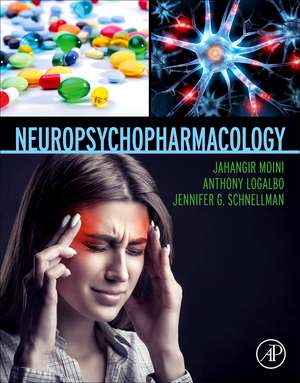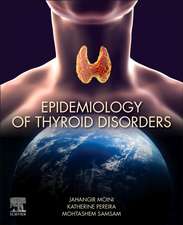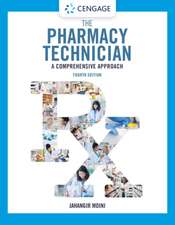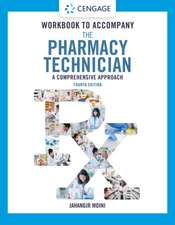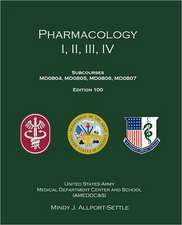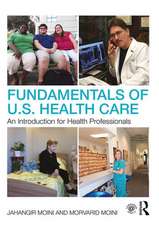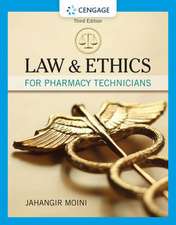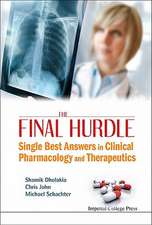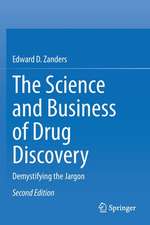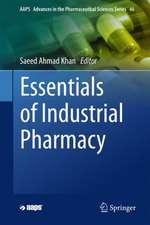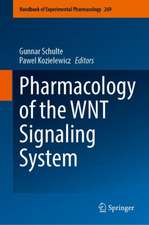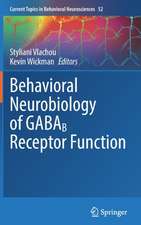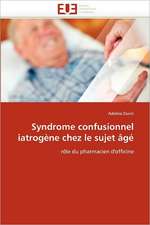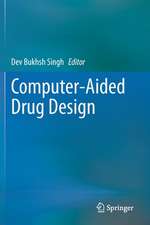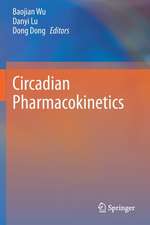Neuropsychopharmacology
Autor Jahangir Moini, Anthony LoGalbo, Jennifer G. Schnellmannen Limba Engleză Paperback – 12 mai 2023
Helpful appendices cover high-alert medications and toxicology effects on the nervous system. Each chapter will contain classifications of medications, pharmacokinetics, mechanism of action, clinical indications and toxicities.
- Describes pharmacology principles pertaining to the central and autonomic nervous system
- Identifies pharmacological interventions for psychiatric disorders including current evidence-based interventions for depression, schizophrenia and anxiety disorders
- Features chapter outlines, end-of-chapter questions, real-world case studies and examinations for deeper learning or teaching
Preț: 953.52 lei
Preț vechi: 1188.34 lei
-20% Nou
Puncte Express: 1430
Preț estimativ în valută:
182.51€ • 198.32$ • 153.41£
182.51€ • 198.32$ • 153.41£
Carte tipărită la comandă
Livrare economică 14-28 aprilie
Preluare comenzi: 021 569.72.76
Specificații
ISBN-13: 9780323959742
ISBN-10: 0323959741
Pagini: 598
Dimensiuni: 191 x 235 x 31 mm
Greutate: 1.24 kg
Editura: ELSEVIER SCIENCE
ISBN-10: 0323959741
Pagini: 598
Dimensiuni: 191 x 235 x 31 mm
Greutate: 1.24 kg
Editura: ELSEVIER SCIENCE
Cuprins
Unit I: Principles of Pharmacology
1. Introduction
2. Drug Approval and Drug Regulations
3. Pharmacokinetics
4. Pharmacodynamics
5. Drug Toxicity and Pharmacogenomics
6. Medication Errors and Risk Reduction
7. Drugs of Abuse and Alcohol
8. Herbal Medications
Unit II: Pharmacology of the Central Nervous System
9. Review of the Central Nervous System
10. Central Nervous System Stimulants
11. Sedative-Hypnotic Drugs
12. Opioid Analgesics and Antagonists
13. Antiseizure Drugs
14. Skeletal Muscle Relaxants
15. Anesthetics and Anesthesia Adjuncts
16. Pharmacology of Parkinson’s Disease
17. Opioid Analgesics and Antagonists
18. Pharmacology of Migraines
Unit III: Introduction to Autonomic Pharmacology
19. Review of the Autonomic Nervous System
20. Sympathomimetic Drugs
21. Sympatholytic Drugs
22. Cholinergic and Cholinoceptor Inhibiting Drugs
23. Cholinergic Blockers
Unit IV: Pharmacology of Psychiatric Disorders
24. Pharmacology of Anxiety and Sleep Disorders
25. Pharmacology of Depression
26. Pharmacology of Bipolar Disorder
27. Pharmacology of Schizophrenia
28. Pharmacology of Attention-Deficit/Hyperactivity Disorder
Appendices
A. List of High-Alert Medications
B. Toxicology Effects on the Nervous System
C. Practice Exam I
D. Practice Exam 2
E. Answer Keys
1. Introduction
2. Drug Approval and Drug Regulations
3. Pharmacokinetics
4. Pharmacodynamics
5. Drug Toxicity and Pharmacogenomics
6. Medication Errors and Risk Reduction
7. Drugs of Abuse and Alcohol
8. Herbal Medications
Unit II: Pharmacology of the Central Nervous System
9. Review of the Central Nervous System
10. Central Nervous System Stimulants
11. Sedative-Hypnotic Drugs
12. Opioid Analgesics and Antagonists
13. Antiseizure Drugs
14. Skeletal Muscle Relaxants
15. Anesthetics and Anesthesia Adjuncts
16. Pharmacology of Parkinson’s Disease
17. Opioid Analgesics and Antagonists
18. Pharmacology of Migraines
Unit III: Introduction to Autonomic Pharmacology
19. Review of the Autonomic Nervous System
20. Sympathomimetic Drugs
21. Sympatholytic Drugs
22. Cholinergic and Cholinoceptor Inhibiting Drugs
23. Cholinergic Blockers
Unit IV: Pharmacology of Psychiatric Disorders
24. Pharmacology of Anxiety and Sleep Disorders
25. Pharmacology of Depression
26. Pharmacology of Bipolar Disorder
27. Pharmacology of Schizophrenia
28. Pharmacology of Attention-Deficit/Hyperactivity Disorder
Appendices
A. List of High-Alert Medications
B. Toxicology Effects on the Nervous System
C. Practice Exam I
D. Practice Exam 2
E. Answer Keys
Recenzii
*4 stars* "...combines principles of neuroscience with an emphasis on the treatment of both neurological and psychiatric disorders... [with] evolving information from the fields of neurology, biology, and pharmacology. ...[T]he authors address the treatment of various disorders including anxiety, depression, mania, and schizophrenia.... [and] assert that specific therapeutic molecules can be developed to create new medications to treat these disorders by understanding the biological basis of complicated mental conditions and the role of biological alterations leading to abnormalities of emotions and thoughts. [A] welcome diversion from typical texts which focus on only one of these areas. [C]hapters are replete with colorful diagrams and photographs, which complement the text, providing the reader with an overall experience that is both authoritative and attractive to the eye.” — ©Doody’s Review Service, 2024, Timothy J. Legg, PhD, PsyD, MSN, PMHNP-BC (Legg Counseling and Consulting Services)
